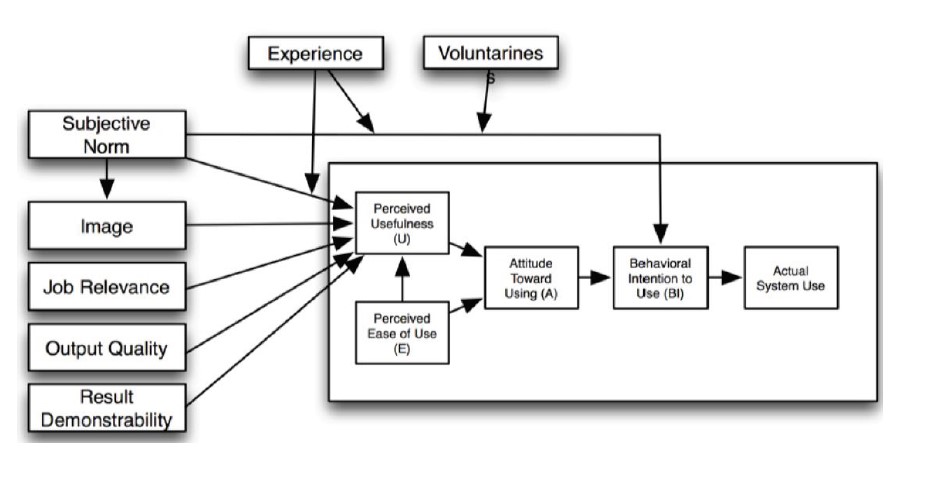The user experience is a crucial element of digital businesses. There are several methods to measure this user experience at different levels. First of all, it is essential to understand that the better the user experience is, the more satisfied visitors to your website, platform, application, and so on, will be with their visit. They will find the information they are looking for quickly, will come back, and will even recommend your solution.
Summary
Introduction
The first essential thing to understand is the importance of the user experience. Numerous scientific publications and research studies prove the importance of the user experience to ensure satisfactory visitor/user volumes and reach.
The TAM (Technology Acceptance Model) is one of the best known in this field. Venkatesh et al. (2000) present this model in their research. This model implies that the behavioural intentions of users are determined according to two axes:
- Individuals’ perceived utility, that is to say, the extent to which an individual considers the use of the system to be useful (productivity)
- Perceived ease of use by individuals, being the extent to which an individual believes that the system is/will be easy to use.
As you can see in the diagram below, external variables (image, quality of output, relevance, and so forth) have a strong influence on perceived usefulness (U). In contrast, the latter, together with the perception related to ease of use (E), has a definite impact on the likelihood of using the system, the intention to use it and the end-use.
The simpler the system is to use, the more useful it will be seen to be, and the more it is perceived to be helpful, the more people will tend to want to use it.

In their research, Munirah et al. (2015) define a third variable influencing the intention to use a system: computer self-efficiency, that is to say, the individual’s ability to use the tools and the availability of the tools and skills needed to use the system in question.
Generative methods
When it comes to measuring and analysing user experience, generative methods aim, as their name suggests, to produce content and knowledge. They mainly take the form of interviews and focus groups which allow the experiences of respondents to be explored and to delve deeper into specific subjects that are essential for the evolution and improvement of the system in question.
As is the case with many interview formats, the aim is then to investigate the respondents’ opinions, beliefs and experiences with the system in question, the prototype or mock-up made available or with similar designs. The aim is to identify areas of differentiation and improvement that need to be addressed to ensure a better user experience.
It is essential to understand that quantitative questionnaires and user tests alone cannot capture the complexity of people’s perceptions. Conducting interviews with users will enable you to understand their opinion of your system much more accurately. Afterwards, you will be able to test several hypotheses with the evaluation methods we detail below. The final objective is, of course, to generate added value and, above all, a better user experience.
Points of attention for generative methods
- Define a clear objective for your interviews and each question. For example, it will be complicated (and considered biased) to ask a respondent to analyse his or her behaviour as a ‘user’. An alternative would be to observe the respondent interacting with the system.
- Educate and involve project stakeholders so that they understand the importance of a thorough analysis of user experience. This will simplify internal discussions and negotiations.
- Prepare your interviews by following the methodologies for qualitative research. Writing an interview guide will allow you to avoid compartmentalising the discussion, biasing the interviewees’ answers or forgetting certain aspects. Find the steps involved in preparing a qualitative interview in this article.
- Make sure you analyse your results neutrally and exhaustively. It is easy to leave out specific nuances or to underline points that are in line with your personal beliefs – it happens more often than you might think! However, it would help if you remain impartial. To do this: record your interviews, have them transcribed and involve your team to have a neutral point of view on your comments.
Find the 4 critical steps to successful qualitative interviews here.
Evaluative methods
Evaluative methods more often take the form of usability tests and aim to test hypotheses. In this test phase, the user’s behaviour on the website, platform, application or system in question is evaluated.
These analyses can take several forms but always remain based on the same principle: observing user behaviour. The interest is thus to be able to grasp the difficulties encountered by users and thus improve the system. These tests are essential to carry out on an ongoing basis or when there is a change in the operation or design of the system. Thus, even before a new design is put online, for example, it is possible to define whether it is indeed more comfortable to use and thus compare several designs and proposals.
The objectives of the user tests are to:
- Determine whether testers can complete the tasks on their own
- Measuring their performance and state of mind when completing tasks
- Understand how the testers enjoyed the experience using the system
- Identify the problems encountered and their seriousness
- Finding solutions to improve the system, the design
Several methodological formats can be used to collect this type of data:
- Person to person tests: more formal, in-person tests are more exhaustive and provide a more in-depth understanding of user behaviour and state of mind at the time of the test(s).
- Remote tests: less formal, they aim to analyse the behaviour of users in their environment and provide more accurate data on the use made of the system/design.
- “Guerrilla” tests: carried out in a very informal way, mainly with knowledge, these tests have the highest risk of inaccuracy of the 3 presented here since they are based on a potentially biased and less qualitative sample.
Conclusion
As with many research projects, generative and evaluative methods are complementary. The former helps to highlight the essential points to work on to ensure a good user experience and to make sure that the system will be used. The second is necessary to understand the problems encountered by users, to solve them and thus to propose a user experience that is ever closer to their expectations and needs.
It should be noted that, as with consumer behaviour research, this type of research will, of course, need to be repeated over time. The knowledge acquired and built up evolves, and all the more rapidly in the digital world. It is, therefore, essential to measure the experience of your users regularly to detect changes and react accordingly and promptly.
Posted in Marketing.



